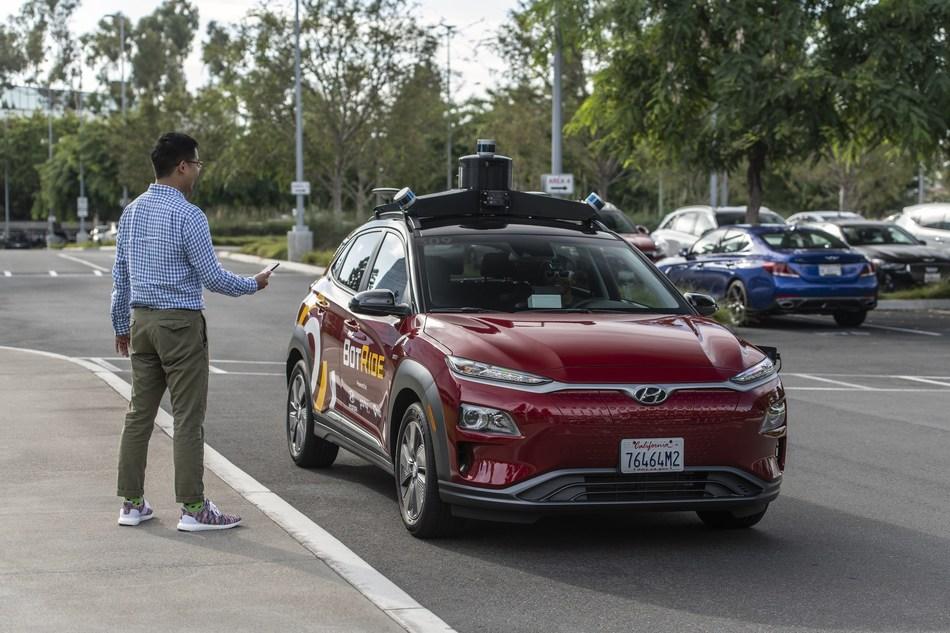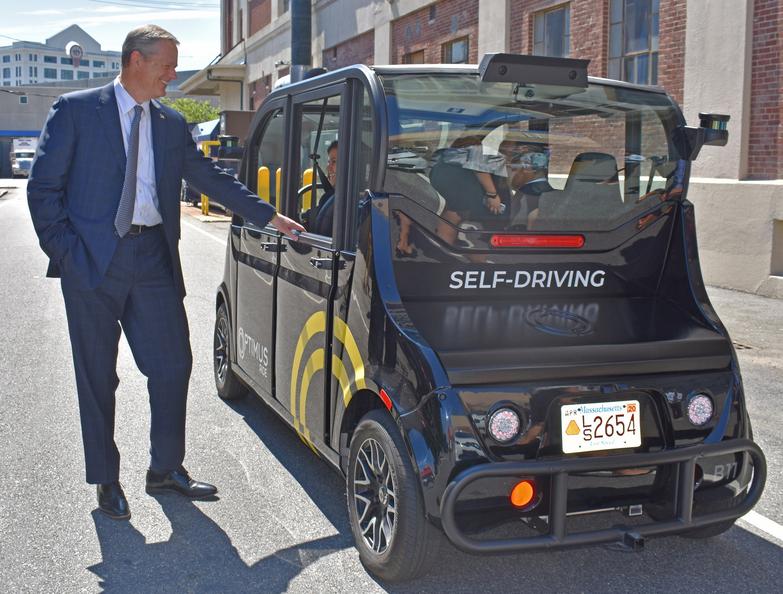
Automated vehicle (AV) hype has soared in recent years. While overblown promises never materialized, investment has continued and progress has been made in bringing them closer to market. Over fifty companies now have permits to test fully automated vehicles in California. A handful of AV-taxi companies even hold permits to test without a safety driver in the vehicle, but the bulk are still in earlier stages of testing. One company, Nuro, has been granted permission to deploy small robots for deliveries.
Meanwhile, California policymakers have been proposing bills and regulations for this new area of the law. There is widespread agreement that AVs have promise, but they will require oversight that doesn’t yet exist. The California State Transportation Agency (CalSTA) recently shared a draft Strategic Framework for AVs, which we applaud. However, the pace of technological change demands stronger policy action, and soon. The delay in AV deployment provides an opportunity to formulate more thoughtful policies that will heighten societal benefits and reduce adverse risks.
Our team, at UC Davis and UC Berkeley, has developed a menu of options that lawmakers can refine to set the state on a path toward AV safety, social equity, mobility, and sustainability. Below is a list of the top ten strategies to consider when developing AV policy in California (see the full report for more detail).
The intent is to utilize the potential of AVs to improve local mobility, enhance safety, and help meet larger state climate goals. Our analysis identifies gaps in existing state policy and ideas for addressing these gaps. The following ten policy strategies are not ranked, but provide a menu of options. They are designed for California lawmakers, but can also inform other states and national governments.
1) Support AVs that complement public transit. The state can encourage shared AV services that connect underserved Californians with public transit. Dozens of AV service programs exist around the world (including these). Many address gaps in transportation networks. For example, AVs have operated as a circulator for an underserved neighborhood in Columbus, Ohio, and there are AV shuttles expanding transit options on campuses in Ann Arbor, Michigan and Arlington, Texas.
But if a pioneering public transit agency wants to add AV service to their network, they’ll most likely need a grant to help make it happen. Too often these grants are rigid (which can restrict agencies from innovating or iterating on their ideas), limit funding flexibility to support capital and operating costs, and are temporary. Lawmakers can help transit agencies innovate by creating dedicated secure revenue streams and encouraging them to experiment with new, forward-thinking services and technologies. The state can set parameters to ensure that innovation is targeted where it’s needed most, especially in underserved areas, and provide transit agencies flexibility to build lasting partnerships with automated shared mobility companies.
2) Discourage personal ownership of AVs and low- and no-occupancy AV travel. Increasing vehicle occupancy (e.g., carpooling and public transit) can reduce traffic and emissions, and has been a common sense strategy for decades. Unsurprisingly, this strategy also makes sense for driverless vehicles. In fact, it is especially important for AVs, which – because of reduced costs of operation and reduced time costs – have been estimated to travel more miles than cars with drivers. So it will be up to regulators to put some weight on the opposite side of the scale to avoid spikes in traffic and energy consumption.
Options to do this include pricing strategies such as mileage-based road charges or registration fees on private ownership of AVs – the latter reflecting research showing that privately owned vehicles may see additional spikes in travel if they are operating empty. Lawmakers can direct revenues from these fees to more efficient modes of travel (including public transit, biking, and walking), equitable access, and maintenance of public infrastructure.
3) Encourage AVs to be deployed as zero emission vehicles (ZEVs). California can encourage AV electrification in many ways. To use the classic carrot and stick analogy (i.e., incentives and regulations), lawmakers can set mandates for AV manufacturers to electrify on a given timeline. For example, S.B. 500, which was just signed by Governor Newsom, calls for all AVs to electrify by 2030, with the exception of heavy freight vehicles. This policy will help set a faster pace for electrification of AVs, but in order to meet this timeline, the state should consider how its investments in public charging infrastructure will ensure it can meet the needs of not just today’s driven cars, but the AVs of tomorrow.
4) Ensure AVs are available to rural and suburban communities that can benefit. A balancing act is needed to ensure that less-dense rural and suburban communities, where the costs of AV passenger services are likely to be higher, are not left out of potential AV benefits. At the same time it is important that AVs are not used where they are not a good fit for the community. Whether AVs will be able to provide a low-cost option for expanding on-demand services in low-density areas remains an open question. Community-needs assessments, to help match AV services to the unique needs of California’s diverse rural and suburban cities, towns, and unincorporated areas, is a first step.
5) Address safety and security for passengers inside AVs as well as for communities that host them. Safety is defined by UC Davis research as “the condition of being secure from accidental harm,” whereas security is “the condition of being safe from intentional harm.” AV safety concerns include the safety of passengers and people outside the vehicle, including pedestrians, cyclists, and other motorists. Security issues include in-vehicle security among unrelated passengers and any potential for taking over vehicles, software, or data. States have clearer purview over passenger security issues, but California can lead the nation by setting safety performance measures (for example, rates of injuries and fatalities, incidents of cybersecurity attacks) and align data collection to measure these safety outcomes (see #9 below for more on data collection).

6) Establish strategies to mitigate job loss and workforce adaptation associated with vehicle automation. Workforce issues are complex. AVs have the potential to put drivers out of work, but also to increase the safety of transportation sector workers who retain their jobs. AVs will also create new jobs, in areas that include dispatching, remote operation, safety surveillance, and professional and management jobs associated with the new business activity.
The state can continue negotiations among impacted workers, labor leaders, and industry to find strategies that work for all. For example, can partial automation technologies yield safety benefits for drivers, other vehicles, other road users, and pedestrians? Where can retraining programs help transition workers impacted by automation (e.g., TNC drivers, truckers) toward high-quality and stable jobs? Addressing these types of questions will help California address transportation sector labor issues.
7) Encourage seamless travel connections between AVs and public transportation. Strategies to achieve seamless transit experiences should include the potential for riders to take an AV to a transit station and hop on a bus or train. AV services should be encouraged to build platforms that can integrate with transit booking and payments from the start, and transit agencies will need to modernize to allow for this, for example by adopting open-loop payment systems. Open loop payment systems allow riders to pay for trips using many forms of payment including credit, debit, Google or Apple Pay, and can set up ways for riders to use cash as well. This approach differs from the standard closed payment systems used by most U.S. transit agencies today, which limits accepted forms of payment and requires an agency-issued ticket or card to ride.
State agencies can also direct resources to public transit and new mobility providers so they can offer multilingual, online, or telephone booking. By encouraging seamless ticketing between transportation modes, the state can enhance multimodal transportation for more Californians.
8) Hasten adoption of AV passenger service for people with disabilities. The state has been cautious about defining an “accessible AV service” or “equivalent AV passenger service,” but creating definitions that apply across agencies is a crucial task. There are also a few other policy gaps California should address. For example, right now the California Public Utilities Commission has responsibility for AV rules for passenger service (e.g., robo taxis); but its rulemaking process for wheelchair-accessible service in transportation network companies (e.g., Uber and Lyft) is separate. Connecting these two efforts makes sense.
California could also support community outreach to understand the needs and limitations of people with disabilities with respect to door-to-door AV services – for example, when people need assistance to access a vehicle.
9) Align data collection across agencies to achieve public objectives. The state can strengthen data collection and analysis to complement existing and planned data collection, and connect it to specific performance measures such as wheelchair accessible rides, injuries, fatalities, and cybersecurity attacks. This is important to allow the state to make effective use of data already being collected by the Department of Motor Vehicles and the California Public Utilities Commission.
This effort could also include either a California data repository or participation in a federal data clearinghouse to make better use of big data from AV service providers. Efficient large data analysis could help inform state, regional, and local planning, while preserving traveler privacy and the proprietary interests of companies.
10) Evolve requirements for AV insurance and liability. This could include establishing more specific AV insurance minimums to match the liability risks of different fleet sizes, cybersecurity, sensors, infrastructure, and algorithmic priorities when a vehicle must select between striking two objects. The state should also identify insurance requirements for those who operate AVs (for example, individual owners, fleet owners, ride-hail companies).
Looking Forward: Identify Near- and Longer-Term StrategiesIn developing this list, we consulted with local, regional, and state government representatives, as well as advocates and industry leaders. From city representatives, we heard that some cities are already seeing AVs roll through their streets, and some of these strategies seem more urgent to them than others. A next step for this research is to identify the near-term strategies that cities need now, and which issues will require more time to observe as the industry evolves and grows.
The State of California just rejected another bill – S.B. 66 (the second attempt after a similar bill, S.B. 59, failed in 2020) which would have created a California Council on the Future of Transportation to bring many stakeholders together, including the auto industry, government, and labor, among other groups. While the bill failed, several agencies within California have the authority to convene such a council or advisory group without legislative approval, but they have been slow to act. Dozens of such advisory groups exist in other states, but California has been unable to agree on the need to find common ground.
Our research makes clear that more discussion is necessary, and given the industry’s slower than expected pace, California now has the time to carefully assemble the stakeholders necessary to chart a pathway for AV safety, equity, mobility, and sustainability.
Mollie D’Agostino is a Policy Director at the 3 Revolutions Future Mobility Program at the UC Davis Policy Institute for Energy, Environment, and the Economy, Susan Shaheen is a UC Berkeley Professor and Director of the Resilient and Innovative Mobility Research at UC ITS, and Daniel Sperling is a UC Davis Professor and the Founding Director of the Institute of Transportation Studies at UC Davis.